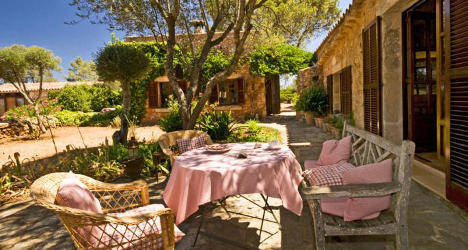Charming, rustic, authentic: these are just three of the words to describe this country cottage in Majorca's peaceful interior.
Located in the island's Sa Comuna area, a few kilometres out of Algaida, this 140-square metre (1,500-square foot) home comes with two bedrooms and two bathrooms.
With a price tag of €525,000 (around $700,000, or £418,000), the property also boasts a spacious kitchen and a beautiful living area with a fireplace. Comfort is at a premium too, with floor heating taking the edge of Majorca's sometimes chilly winters.
Click here to check out more images of this amazing property
The property includes two outhouses which could be used as everything from an artist's studio to storage space.
Last but not least, this country home boast just under 10,000sqm of mature gardens, perfect for enjoying your place in the sun.
For more details, and to contact an agent, click here.




 Please whitelist us to continue reading.
Please whitelist us to continue reading.
Member comments